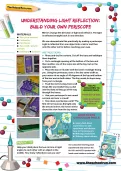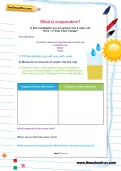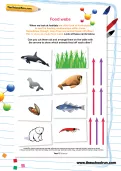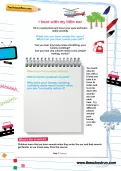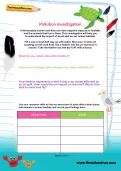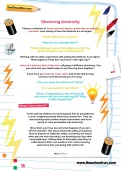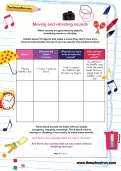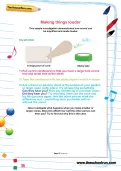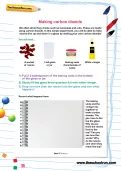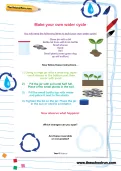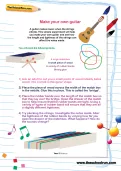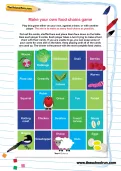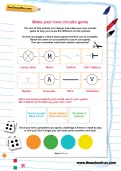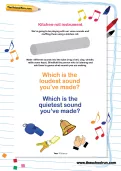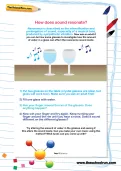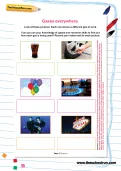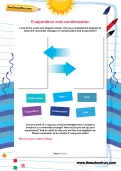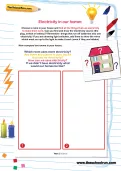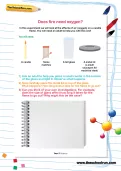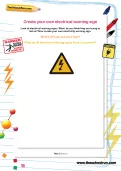Unfortunately human activities can have negative impacts on habitats and the animals that live in them. This investigation will help you to understand the impact of an oil spill on our ocean habitats.
or
Register to add to your saved resources
Already a subscriber? to view this content.
Choose a selection of small electrical objects, preferably two-battery operated. Look closely at how the batteries are arranged. Open up a plug and look at the wires, all going in different directions. Can you work with your adult helper to put the plug back together? If you have an electricity meter clock, look at the dial turning and how much electricity you are using.
or
Register to add to your saved resources
Already a subscriber? to view this content.
When sounds are generated by objects, something moves or vibrates. Collect about 10 objects that make a noise (they don’t have to be musical instruments) and see if you can answer these questions.
or
Register to add to your saved resources
Already a subscriber? to view this content.
This simple investigation demonstrates how sound can be amplified and made louder.
or
Register to add to your saved resources
Already a subscriber? to view this content.
We often drink fizzy drinks such as lemonade and cola. These are made using carbon dioxide. In this simple experiment, you will be able to make raisins dive up and down in a glass by making your own carbon dioxide!
or
Register to add to your saved resources
Already a subscriber? to view this content.
Build your own water cycle and investigate reversible and irreversible changes.
or
Register to add to your saved resources
Already a subscriber? to view this content.
A guitar makes music when the strings vibrate. This simple experiment will help you make your own guitar and see how the length and tightness of the strings can affect the notes made.
or
Register to add to your saved resources
The aim of this game is to make as many food chains as possible.
or
Register to add to your saved resources
The aim of this activity is to design and make your own circuits game to help you revise the different circuit symbols.
or
Register to add to your saved resources
Already a subscriber? to view this content.
We’re going to be playing with our voice sounds and muffling them using a kitchen roll. Make different sounds into the tube (ring a bell, clap, whistle, rattle some keys). Blindfold the person who is listening and ask them to guess what sounds you are making.
or
Register to add to your saved resources
Sit in a quiet place and close your eyes and listen really carefully. What can you hear inside the room? What can you hear inside yourself? Record the sounds you hear.
or
Register to add to your saved resources
Resonance is described as the intensification and prolongation of sound, especially of a musical tone, produced by sympathetic vibration. Now ask an adult if you can borrow some glasses to investigate how the amount of water in a glass can affect the resonance sound made.
or
Register to add to your saved resources
Already a subscriber? to view this content.
Can you use your knowledge of gases and research skills to find out how each gas is being used? Record your notes next to each picture.
or
Register to add to your saved resources
Already a subscriber? to view this content.
Look at the cards and diagram. Can you complete the diagram to show the reversible changes of freezing and melting? Don’t forget to label the states of water too!
or
Register to add to your saved resources
Already a subscriber? to view this content.
When we look at habitats we often look at food chains to see the feeding relationships within them. Sometimes, though, more than one animal feeds off others. This is when we make food webs. Look at these cards. Can you cut them out and arrange them on the table with the arrows to show which animals feed off each other?
or
Register to add to your saved resources
Evaporation happens all around us. Can you describe what is happening in these pictures? What conditions can make this change happen? What other examples of evaporation can you think of?
or
Register to add to your saved resources
Already a subscriber? to view this content.
Look at the cards and diagram. Can you complete the diagram to show the reversible changes of condensation and evaporation?
or
Register to add to your saved resources
Already a subscriber? to view this content.
Choose a room in your house and find all the things that use electricity to make them work. Can you find and draw the electricity source (the plug, switch or battery)? Remember: things that run off batteries also use electricity! If you are drawing light switches, add lines to show the wires which must run up to the light to make it work (even if they are hidden)
or
Register to add to your saved resources
Already a subscriber? to view this content.
In this experiment we will look at the effects of air (oxygen) on a candle flame. You will need an adult to help you with this one!
or
Register to add to your saved resources
Already a subscriber? to view this content.
Look at electrical warning signs. What do you think they are trying to tell us? Now create your own electricity warning sign.
or
Register to add to your saved resources
Already a subscriber? to view this content.
